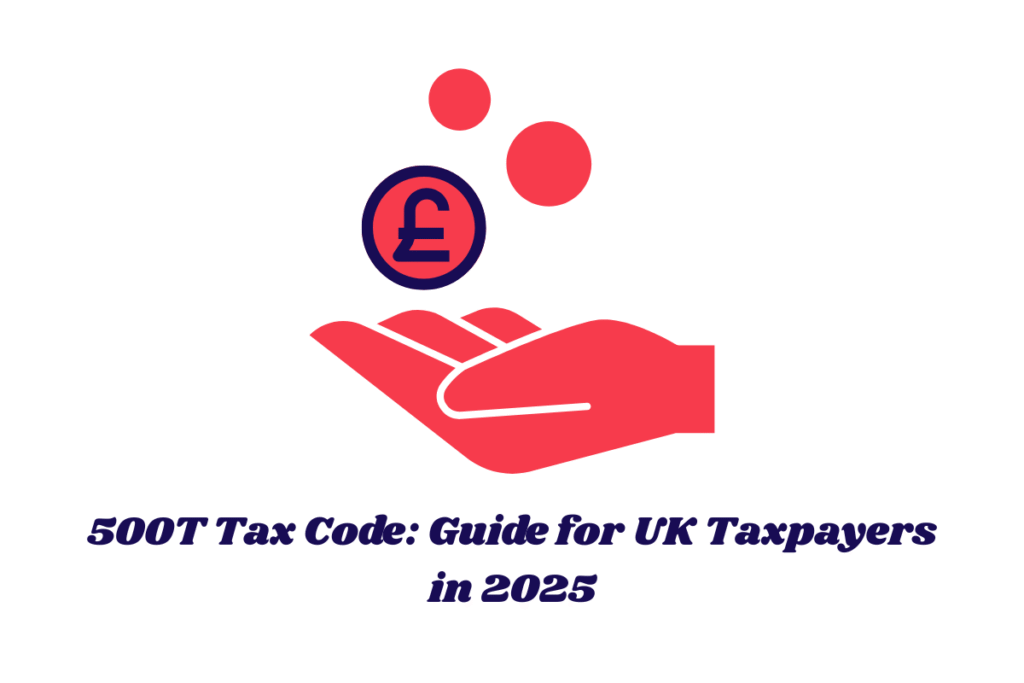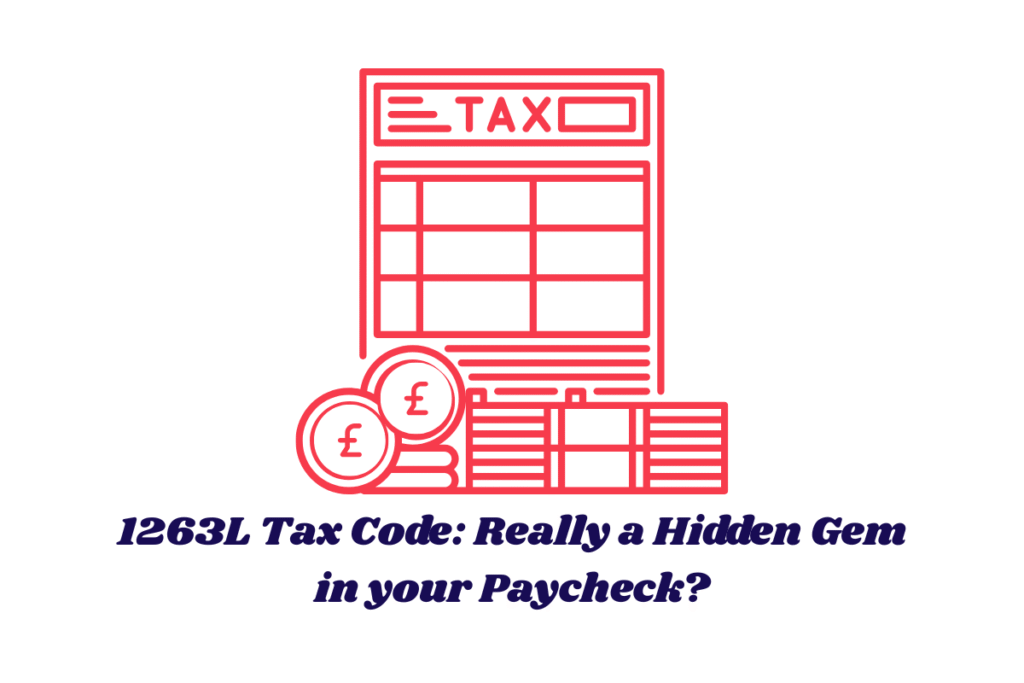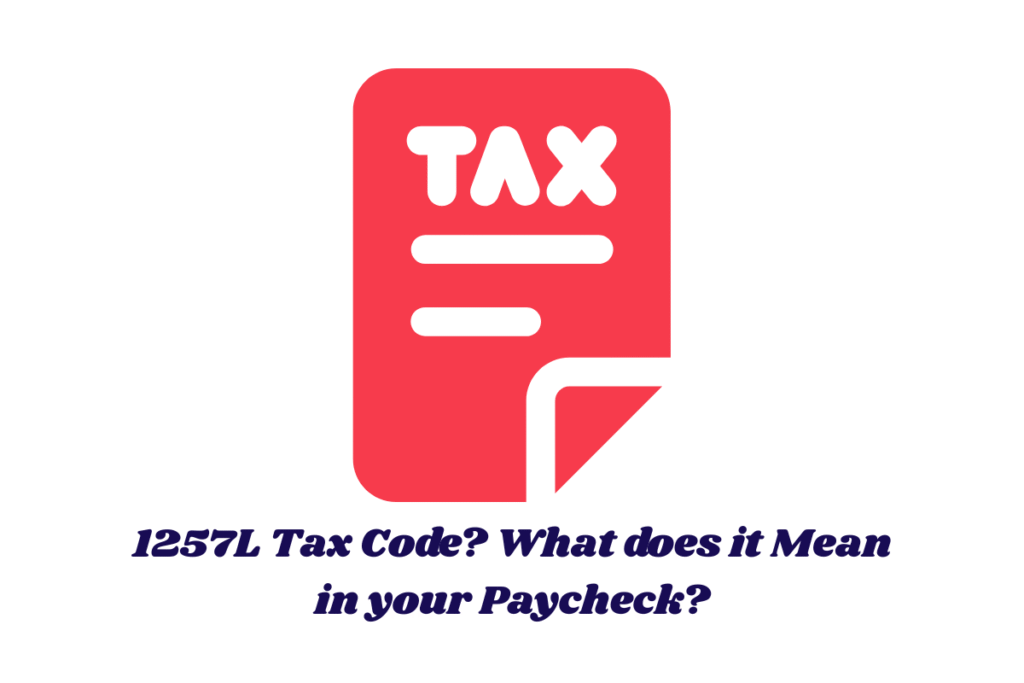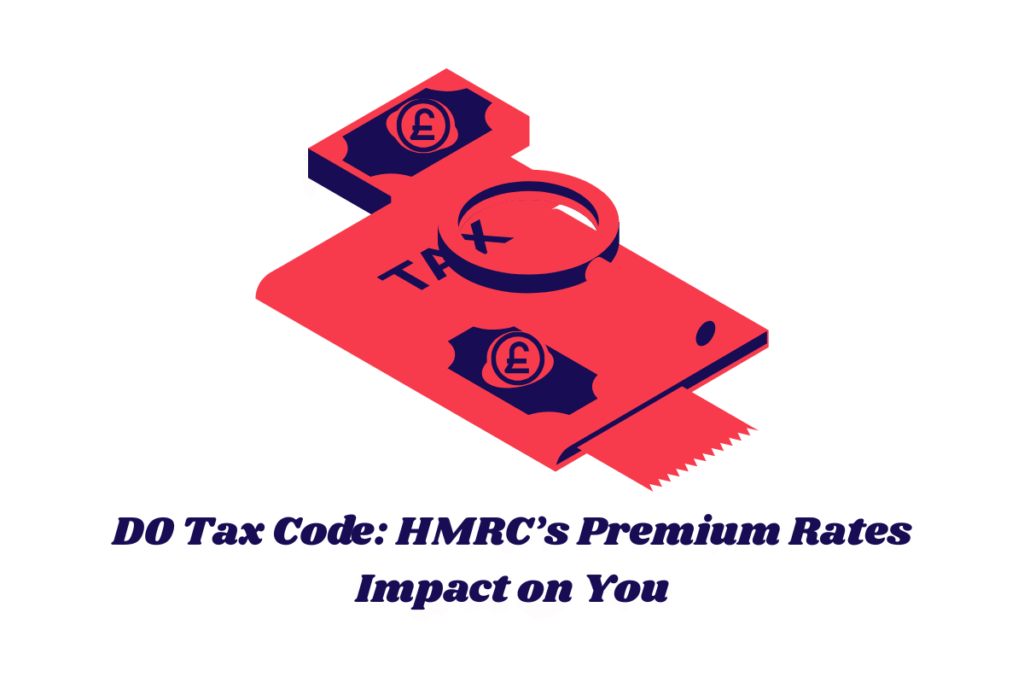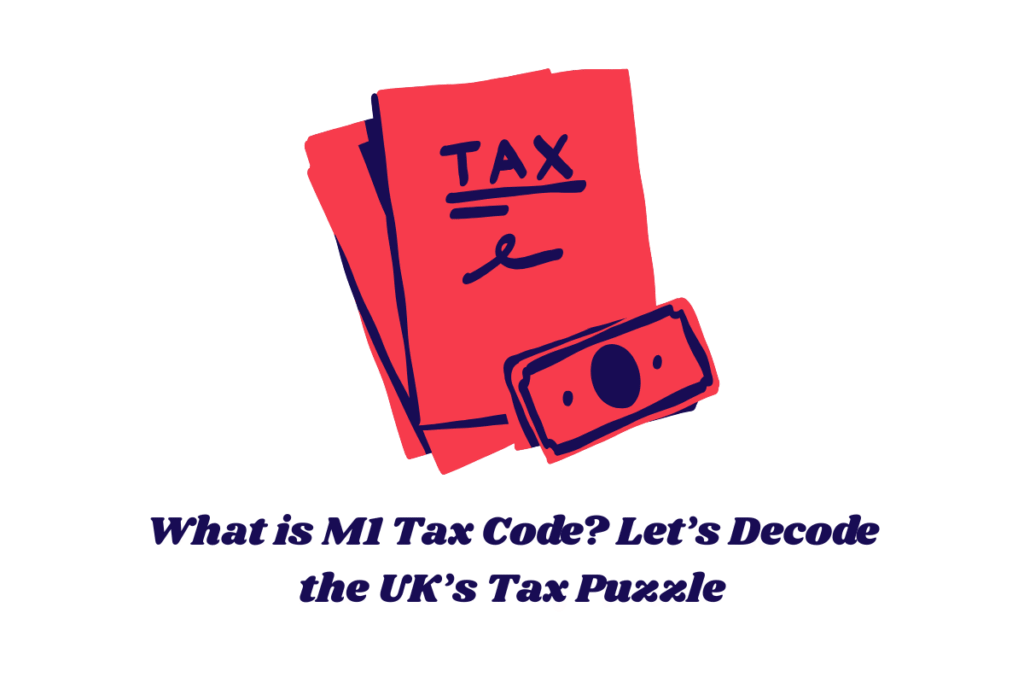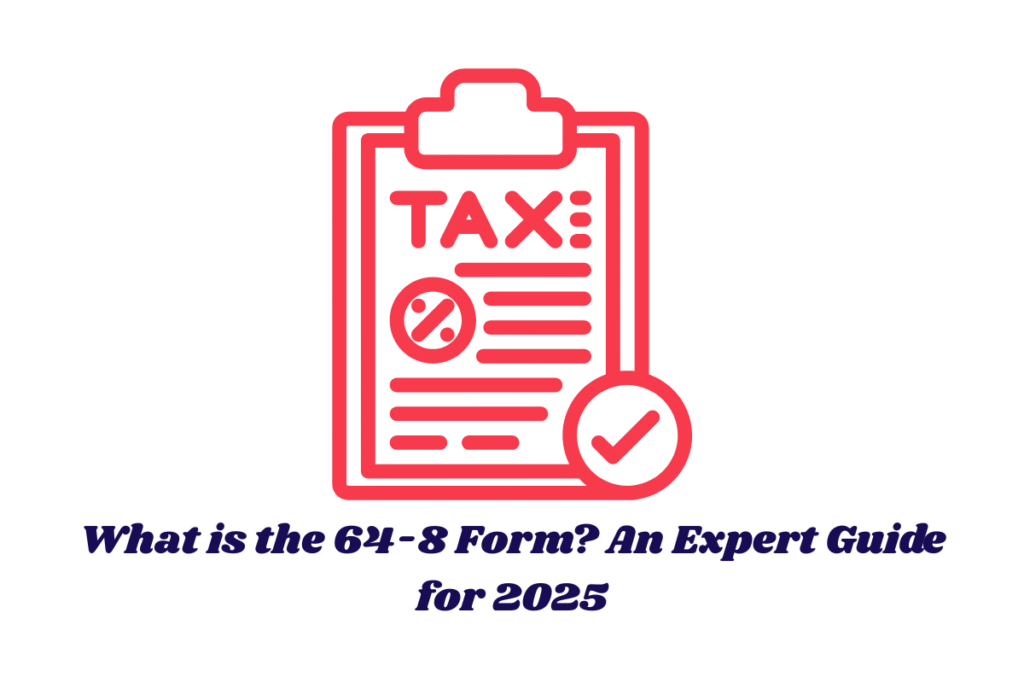Understanding your tax code is critical to ensuring your income tax is calculated correctly. One such code that often causes confusion is the 500T tax code.
In this guide, we’ll break down what the 500T tax code means in 2025, why it might appear on your payslip, the implications it has on your take-home pay, and how you can work with HMRC to resolve any issues.
Summary
“This article explores the 500T tax code in the UK, why it’s used, how it impacts your tax, and how to manage it effectively with HMRC.”
What Is the 500T Tax Code?
The 500T tax code is a temporary, non-cumulative tax code issued by HM Revenue & Customs (HMRC) when they lack the necessary information to apply a standard tax code.
The number ‘500’ represents a reduced personal allowance (usually lower than the standard allowance), and the ‘T’ signifies adjustments or calculations made to that allowance.
HMRC defines the “T” suffix as meaning: “Your tax code includes other calculations to work out your Personal Allowance.” Source: HMRC
Summary
“The 500T tax code is a temporary and non-cumulative code used when HMRC lacks full details to assign your correct tax code.”
Why Is the 500T Tax Code Used?
There are several scenarios where HMRC may assign the 500T tax code:
1. Starting a New Job Without a P45
If you begin a new role and your new employer doesn’t receive your P45 from your previous employer, they lack sufficient information to apply the correct tax code. In such cases, they might use the 500T code until HMRC provides updated tax instructions.
Summary
“The 500T tax code is commonly applied when you start a new job and don’t provide a P45.”
2. Complex Income or Tax Situations
If you have multiple sources of income, such as pensions, freelance earnings, or foreign income, HMRC may temporarily assign the 500T code to handle these complexities until a complete tax review is done.
Summary
“The 500T code is often used to deal with complicated income situations involving multiple sources.”
You can read more articles on different taxe codes in the UK:
1263L Tax Code: Really a Hidden Gem in your Paycheck
1257L Tax Code: What Does it Mean in Your Paycheck?
D0 Tax Code:HRMC’s Premium Rates Impact on You
3. Emergency Tax Code
When there is an urgent need to deduct tax but HMRC lacks full information, the 500T code may be used as an emergency tax measure. It ensures tax is collected in the interim while your correct status is being established.
Summary
“HMRC may use the 500T tax code as an emergency measure to ensure tax collection during incomplete assessments.”
How Does the 500T Tax Code Work in 2025?
Under the 2025 tax year rules, the standard personal allowance remains £12,570. The 500T tax code applies a personal allowance of £5,000 instead, which can result in higher tax deductions.
Moreover, as a non-cumulative tax code, it calculates tax based only on that specific pay period, not the cumulative income throughout the year.
Example:
If you’re paid monthly under the 500T code, your personal allowance is divided across the year, giving you only around £416 per month tax-free, compared to £1,047.50 under the standard 1257L code. This can result in overpayment or underpayment of tax.
Summary
“The 500T code assumes a reduced personal allowance and doesn’t consider previous earnings, which can result in incorrect tax deductions.”
Implications of Being on the 500T Tax Code
1. Risk of Overpayment
Since your tax-free allowance is lower than usual and previous pay periods aren’t considered, you may pay more tax than necessary.
Summary
“You might overpay tax under the 500T code due to a reduced allowance and non-cumulative calculations.”
2. Risk of Underpayment
If your employer miscalculates or your personal situation changes, there’s a chance you may underpay tax, leading to a bill from HMRC later.
Summary
“Incorrect allowance calculations under the 500T code can result in tax underpayments requiring future adjustments.”
3. Temporary Taxation
This tax code is not permanent. Once HMRC receives all the necessary information, they’ll issue an updated tax code (typically like 1257L) and any discrepancies in overpaid or underpaid tax will be adjusted automatically.
Summary
“The 500T tax code is a temporary placeholder and will be replaced once HMRC updates your details.”
What to Do If You Are on the 500T Tax Code
Being proactive is key to resolving issues with the 500T tax code. Here are the steps to take:
1. Contact HMRC Directly
Speak with HMRC through their helpline on 0300 200 3300, or use your online personal tax account to update your information and request a tax code review.
👉 Visit HMRC’s Tax Code Tool
Summary
“Contact HMRC or log in online to update your tax details and resolve issues with the 500T code.”
2. Provide Necessary Documents
Make sure your employer has received your P45, or if unavailable, complete a Starter Checklist to help them apply the right code. Include information about any other jobs or pensions you may have.
Summary
“Submitting your P45 or Starter Checklist can help your employer and HMRC assign the correct tax code.”
3. Monitor Your Payslips
Check your payslip regularly to verify the tax code being applied. Look out for codes like 500T, 1257L, or BR (basic rate) to ensure accuracy.
Summary
“Regularly checking your payslips can alert you to incorrect tax code usage.”
Tips for Communicating Effectively with HMRC
Efficient communication with HMRC can fast-track your tax code correction. Here’s how to do it right:
1. Be Organised
Keep copies of your P45, P60, previous payslips, and any letters from HMRC.
Summary
“Having your tax documents ready makes interactions with HMRC smoother.”
2. Be Clear and Precise
When contacting HMRC, explain your situation simply and accurately. For instance, mention your new job, missing P45, or multiple incomes.
Summary
“Clear communication helps HMRC assess your situation quicker and assign the right code.”
3. Use HMRC’s Online Tools
Register for HMRC’s Personal Tax Account to view and update your tax information without waiting on hold.
Summary
“HMRC’s online portal allows real-time updates to your tax code and account.”
What Happens After HMRC Updates Your Tax Code?
Once HMRC updates your tax code, they issue a P2 Tax Code Notice. Check it carefully for accuracy. Your employer will also receive the new code and update their payroll system.
If you’ve overpaid tax while under the 500T tax code, HMRC will refund the excess—either through your payslip or a direct payment at the end of the tax year. In case of underpayment, they may adjust your future tax code or send you a bill.
Summary
“Your tax will be reconciled once HMRC updates your code, with any refunds or bills handled directly.”
Key Facts about 500T Tax Code for 2025
| Aspect | Detail |
| Type | Temporary & Non-cumulative |
| Personal Allowance Applied | £5,000 |
| Standard Allowance for 2025 | £12,570 |
| Common Use Cases | New jobs, missing documents, complex incomes |
| Risk | Overpayment or underpayment of tax |
| Resolution | Contact HMRC, submit forms, monitor payslips |
| Official Source | HMRC Tax Codes |
Summary
“This table summarises the core details of the 500T tax code for the 2025 tax year.”
Can You Avoid the 500T Tax Code?
Yes, with proactive action:
- Always provide your P45 when starting a new job.
- Notify HMRC of any changes in employment or income.
- Complete a new Starter Checklist if your P45 is unavailable.
- Register for HMRC’s digital services and keep your profile up to date.
Summary
“Avoiding the 500T code is possible by being prompt and thorough in updating your tax information.”
Finishing Lines
The 500T tax code is not something to panic about—but it should be addressed quickly. Whether you’re starting a new job or dealing with a complex tax situation, knowing what this code means and how it affects you can protect your income.
Ensure timely communication with HMRC, verify every payslip, and stay informed about changes in your tax status.
Summary
“Understanding and managing the 500T tax code ensures accurate taxation and prevents financial discrepancies.”
The content provided on TaxCalculatorsUK, including our blog and articles, is for general informational purposes only and does not constitute financial, accounting, or legal advice.
You can also visit HMRC’s official website for more in-depth information about the topic.
